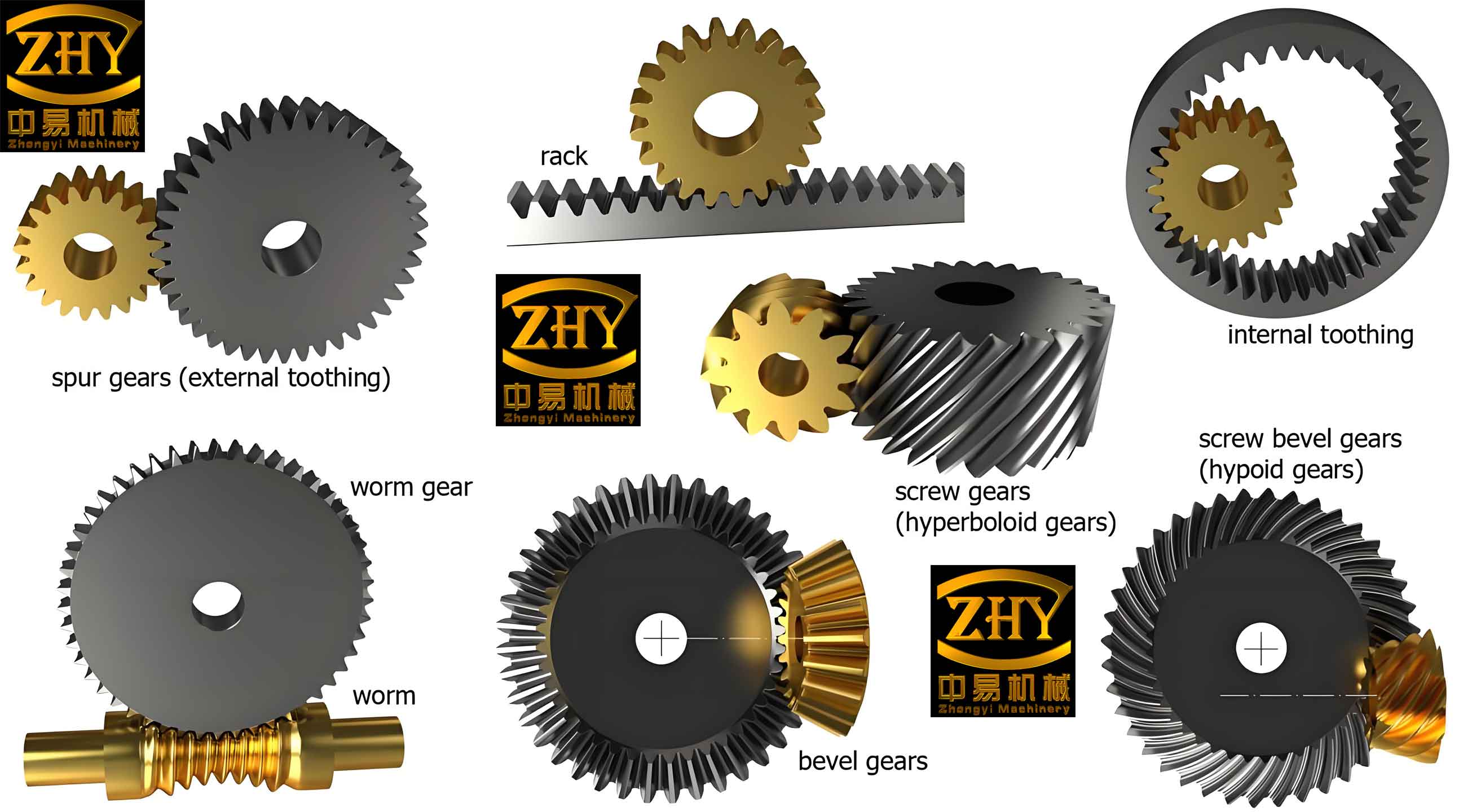
Introduction
Spur gear is integral components in many mechanical systems, and their failure can lead to significant operational disruptions. Finite Element Analysis (FEA) is a powerful computational tool used to predict and analyze failure modes in spur gear, helping engineers design more reliable and durable gear systems. This article delves into the application of FEA in predicting spur gear failure modes, detailing common failure modes, FEA methodologies, and case studies.
Common Failure Modes in Spur Gear
Understanding the common failure modes in spur gear is essential for effective analysis and prediction using FEA. The primary failure modes include pitting, bending fatigue, wear, and scuffing.
Pitting
Pitting is a surface fatigue failure characterized by the formation of small pits on the spur gear tooth surface due to repeated contact stresses.
Bending Fatigue
Bending fatigue occurs due to cyclic bending stresses at the spur gear tooth root, leading to the initiation and propagation of cracks.
Wear
Wear involves the gradual material loss from the spur gear tooth surface due to abrasive, adhesive, or erosive mechanisms.
Scuffing
Scuffing is a severe surface damage caused by the welding and tearing of spur gear tooth surfaces under high-load conditions.
Table 1: Common Spur Gear Failure Modes
| Failure Mode | Description | Causes |
|---|---|---|
| Pitting | Formation of small pits on the spur gear surface | Repeated contact stresses |
| Bending Fatigue | Crack initiation and propagation at tooth root | Cyclic bending stresses |
| Wear | Material loss from the tooth surface | Abrasive, adhesive, or erosive mechanisms |
| Scuffing | Severe surface damage | High-load conditions |
Finite Element Analysis Methodology
FEA is used to simulate the behavior of spur gears under various loading conditions, allowing for the prediction of failure modes. The process involves several key steps: model creation, material property definition, meshing, boundary conditions application, and analysis.
Model Creation
The first step in FEA is creating an accurate geometric model of the spur gear, including all relevant features such as tooth profile, fillets, and keyways.
Material Property Definition
Defining the material properties, such as Young’s modulus, Poisson’s ratio, and yield strength, is crucial for accurate simulation results.
Meshing
Meshing involves dividing the geometric model into smaller elements. A finer mesh results in more accurate results but requires more computational resources.
Boundary Conditions Application
Applying appropriate boundary conditions, including loads, constraints, and contacts, is essential to replicate the real-world operating conditions of the spur gear.
Analysis
The final step is running the analysis to simulate the spur gear’s response to the applied loads and identify potential failure modes.
Table 2: FEA Methodology Steps
| Step | Description |
|---|---|
| Model Creation | Develop an accurate geometric model of the spur gear |
| Material Property Definition | Define material properties for simulation |
| Meshing | Divide the model into smaller elements |
| Boundary Conditions Application | Apply loads, constraints, and contacts |
| Analysis | Run the simulation and analyze results |
Case Study: Predicting Bending Fatigue Failure
To illustrate the application of FEA in predicting spur gear failure modes, we consider a case study of bending fatigue failure.
Model and Meshing
A 3D model of a spur gear was created with detailed tooth geometry. The model was meshed with fine elements around the tooth root to capture stress concentrations accurately.
Material Properties
The spur gear material was defined as alloy steel with the following properties:
- Young’s modulus: 210 GPa
- Poisson’s ratio: 0.3
- Yield strength: 900 MPa
Boundary Conditions
The spur gear was subjected to cyclic loading with a known load spectrum. Constraints were applied to simulate the gear’s mounting conditions.
Analysis and Results
The FEA simulation revealed high-stress concentrations at the tooth root, where cracks were likely to initiate. The predicted locations and orientations of these cracks corresponded well with observed failures in physical tests.
Table 3: Bending Fatigue Case Study Parameters
| Parameter | Value |
|---|---|
| Young’s Modulus | 210 GPa |
| Poisson’s Ratio | 0.3 |
| Yield Strength | 900 MPa |
| Loading Condition | Cyclic loading with load spectrum |
| Critical Stress Location | Tooth root |
Case Study: Predicting Pitting Failure
Another case study focuses on predicting pitting failure using FEA.
Model and Meshing
A 3D spur gear model was created, emphasizing the contact surfaces. A fine mesh was used in the contact region to capture the stress distribution accurately.
Material Properties
The spur gear material was defined as case-hardened steel with the following properties:
- Young’s modulus: 210 GPa
- Poisson’s ratio: 0.3
- Surface hardness: 700 HV
Boundary Conditions
The spur gear was analyzed under a high-load operating condition to simulate the contact stresses that lead to pitting.
Analysis and Results
The FEA results indicated high contact stresses on the spur gear tooth surfaces, with peak values exceeding the material’s fatigue limit. The predicted pitting locations matched the areas where pitting was observed in service.
Table 4: Pitting Failure Case Study Parameters
| Parameter | Value |
|---|---|
| Young’s Modulus | 210 GPa |
| Poisson’s Ratio | 0.3 |
| Surface Hardness | 700 HV |
| Operating Condition | High-load |
| Critical Stress Location | Tooth surface |
Conclusion
Finite Element Analysis is a vital tool in predicting failure modes in spur gear systems. By accurately simulating the spur gear’s response to various loading conditions, FEA helps identify potential failure points, enabling engineers to design more reliable and durable gears. The detailed case studies on bending fatigue and pitting demonstrate the practical application of FEA in predicting and mitigating gear failures, ultimately leading to improved gear performance and longevity.
